NOTE
I did not write this, retro-computing enthusiast Thomas Cherryhomes (owner of irata.online) did, on Twitter in December 23rd 2022 — hence the backdated publication date for this post.
I’m turning his Twitter thread into a proper blogpost because it’s a very informative one for my own research on Karsten Obarski, and I fear that this content might be gone sometimes soon, what with Twitter/X turning into a dumpster fire, and Thomas possibly closing his own account and moving to Mastodon…
Yes, there exist apps such as ThreadReader, but they don’t archive threads, they just display them in a more streamlined way.
Thomas’ thread is reproduced as-is, as closely as possible, with only [minor tweaks] from my part here and there. All credits due to him.
It is commonly said that Karsten Obarski created the MOD format.
Nope.
[Obarski’s Ultimate] SoundTracker saved songs[, not MODs].
The format we know today as MOD evolved very quickly through the efforts of many hackers trying to make an in-house tool better.
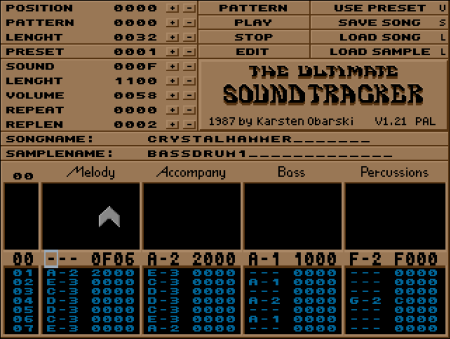
It was expected that once you had a song ready to embed within a game, that you would use the supplied replay routine, and fill in the blanks at the bottom containing pointers to the up to 15 instrument samples you wished to use.
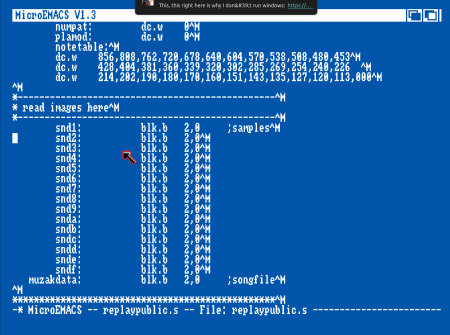
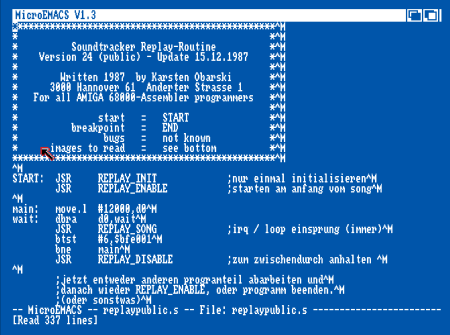
This wasn’t considered a problem, because this was an in-house development tool for game music, and you couldn’t even modify the preset sounds, because they were hard-coded into the program.
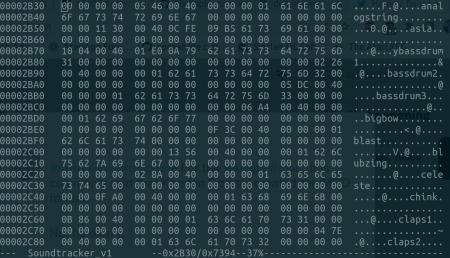
Obi1Nickname of Karsten Obarski. would continue with his original version of Ultimate SoundTracker, eventually splitting out the preset-list to a separate file (PLST), making a source file for it that could be assembled with SEKA-Assembler…
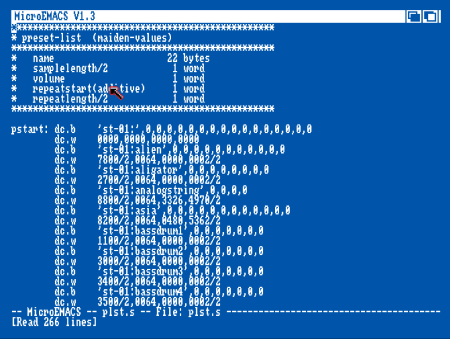
…and providing a separate PRESET-ED tool that could modify the PLST file, thereby allowing a musician to not only have his own presets, but to properly store the important instrument data (length, repeat, replen, etc.), and release it as version 1.8 in April of 1988.
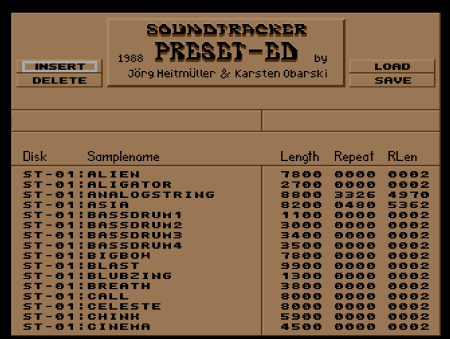
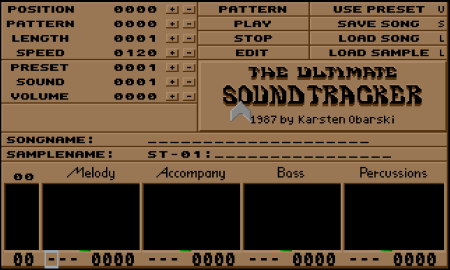
The ability to even SAVE a module didn’t appear until after more than half a year after the cracking groups started disassembling SoundTracker to add features. It appears as early as July 1988 in D.O.C.’s Soundtracker IX, to be used with its replay routine.

It turns out that July 1988 was a watershed moment for SoundTracker, because The New Masters2« Coder 4: Tip of TNM » in the screenshot below, future author of Oktalyzer. had significantly modified SoundTracker to add module loading (first appearance of Disk Op menu), making the module format sustainable as a self contained music format.

Finally, that October, Obi released UST3Ultimate Soundtracker. version 2.0, it also had the Save Module feature, but no Load Module feature. This would never make it into The Ultimate SoundTracker, as Obi would stop working on the program, and even more would happen in the coming months…
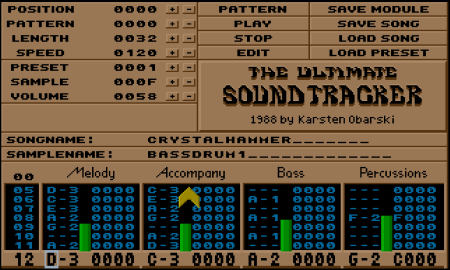
(fin)
Thomas also produced a comprehensive look at Ultimate Soundtracker 1.21:
Other articles in this series:
- Soundtracking sur Amiga : passion, explications et exemples — The Twitter thread that started it all (in French).
- Soundtracker origins, part 1: Where in the World is Karsten Obarski? — About Karsten Obarski, author of The Ultimate Soundtracker.
- The origin of Soundtracker’s MOD format — When you see a Twitter thread with key information, it is your duty to preserve it.
- Soundtracker origins, part 2: Welcome to Turrican, aah hahahaha — About Chris Hülsbeck, author of Soundmonitor.
- Soundtracker origins, part 3: Facing a stone mountain — About Karl Steinberg, author of MIDI Multitrack Sequencer.
- Soundtracker Origins, interlude: The coders behind the Cambrian explosion — Where I get to interview a few key people in the Soundtracker saga.